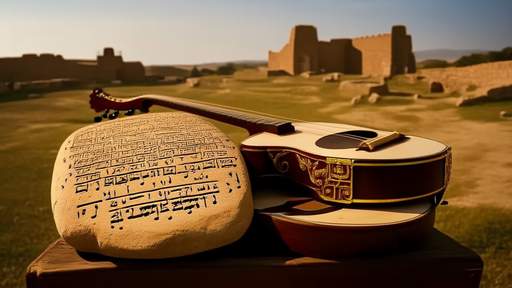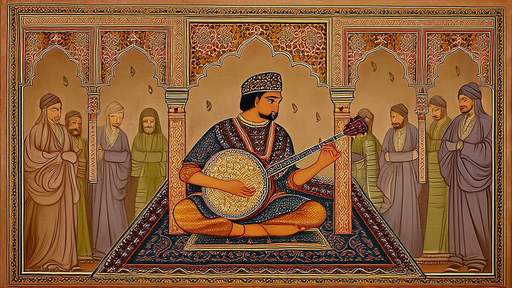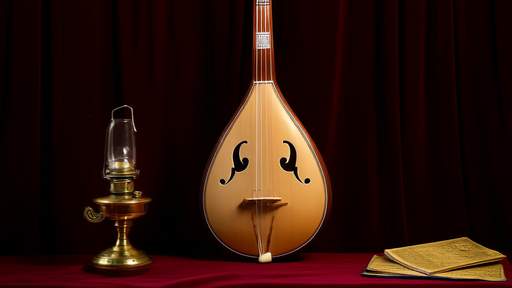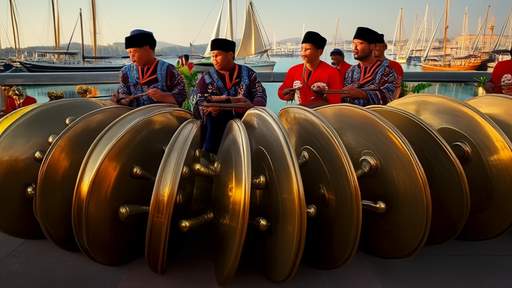The kulintang, a traditional bronze gong ensemble from the southern Philippines, represents more than just a musical tradition—it is a living testament to the intricate trade networks that once connected the islands of Southeast Asia. These finely crafted instruments, often passed down through generations, tell a story of cultural exchange, maritime commerce, and the shared heritage of the Nusantara region. The trade of bronze gongs, particularly the kulintang, reveals how pre-colonial societies engaged in long-distance exchanges, forging connections that transcended political and linguistic boundaries.
Bronze gong production in the Philippines was deeply intertwined with the broader maritime trade routes of Southeast Asia. The raw materials—copper and tin—were not locally abundant in the southern Philippines, suggesting that early artisans relied on imported metals from neighboring regions such as Borneo, Sumatra, and even mainland Southeast Asia. Historical records and archaeological findings indicate that the trade of bronze goods, including gongs, was a thriving industry as early as the 10th century. Chinese traders, who frequented Philippine shores, often documented these exchanges, noting the high value placed on bronze instruments among indigenous communities.
The kulintang’s journey across the archipelago was facilitated by the sophisticated boat-building techniques of maritime Southeast Asia. The balangay, or ancient wooden boats, enabled traders to transport heavy bronze gongs across vast distances. These vessels were not merely tools of commerce but also carriers of culture, as the gongs they transported became integral to the musical and spiritual practices of various ethnic groups. The Maguindanao, Maranao, and Tausug peoples, among others, incorporated the kulintang into their rituals, weddings, and communal celebrations, ensuring its preservation over centuries.
What makes the kulintang trade particularly fascinating is its role in diplomacy and social stratification. In many pre-colonial Philippine societies, bronze gongs were symbols of wealth and power. They were often used as bride wealth in marriage negotiations or as peace offerings between rival clans. The more gongs a chieftain possessed, the greater his influence within the community. This social significance further fueled the demand for kulintang sets, encouraging traders to establish specialized routes dedicated to their distribution.
The craftsmanship of kulintang gongs also reflects the technological sophistication of early Southeast Asian metallurgy. Skilled artisans employed the lost-wax casting method, a technique that allowed for intricate designs and precise tonal qualities. Each gong was tuned to a specific pitch, and a full kulintang ensemble required a carefully balanced set. The knowledge of bronze-working was likely disseminated through the same trade networks that transported the finished products, creating a feedback loop of technological and artistic innovation.
Despite the decline of traditional bronze gong trading in the modern era, the kulintang remains a vibrant cultural symbol. Contemporary musicians and cultural advocates work to preserve its legacy, ensuring that the stories of trade, craftsmanship, and cross-cultural connections are not forgotten. The kulintang’s resonance, both literal and metaphorical, continues to echo through the ages, reminding us of a time when the seas were not barriers but bridges linking diverse peoples and traditions. and tags. Let me know if you'd like any refinements!

By /Jun 6, 2025

By /Jun 6, 2025

By /Jun 6, 2025

By /Jun 6, 2025

By /Jun 6, 2025

By /Jun 6, 2025

By /Jun 6, 2025

By /Jun 6, 2025

By /Jun 6, 2025

By /Jun 6, 2025

By /Jun 6, 2025

By /Jun 6, 2025

By /Jun 6, 2025

By /Jun 6, 2025

By /Jun 6, 2025

By /Jun 6, 2025

By /Jun 6, 2025

By /Jun 6, 2025

By /Jun 6, 2025

By /Jun 6, 2025